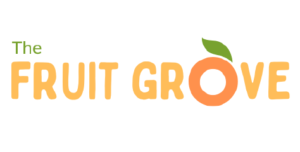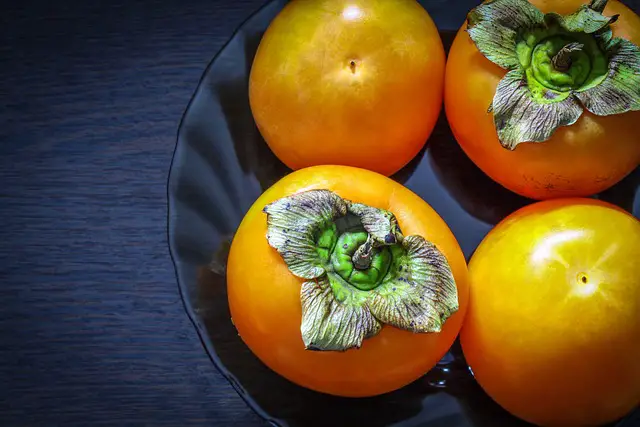
When my dad was a kid, he lived on a farm that had several native persimmon trees. His mom sent him to school one day with bags full of bright orange persimmons right off the tree. He offered them to his classmates at lunchtime.
Some kids made sure to grab the gooey, soft, almost rotten-looking fruits, as those were the sweetest. The rest of the class (who had never tried persimmons) of course reached for the firm, perfect-looking fruits…and they were rewarded with the mouth-puckering astringency of under-ripe persimmon.
Many people have probably had similar experiences. When ripe, persimmons can be absurdly sweet and succulent, but unripe they are astringent and dry-tasting. But not all persimmons are astringent, and there can be a lot of flavor and texture variations. So what’s the difference between the astringent and non-astringent types of persimmons?
Astringent persimmons should be eaten when fully ripe and soft, while non-astringent persimmons are sweet when still firm. Ripe astringent types are extremely sweet and jam-like, but unripe they are bitter and dry. Non-astringents have a milder sweetness, and are crisp or soft depending on ripeness.
It’s no wonder there’s so much confusion about the flavor and ripeness of persimmons. Depending on the type, cultivar, and when it’s picked, the texture and flavor could be delightful or disastrous. Let’s take a look at astringency in persimmons, what the differences are, and some of our favorite varieties to grow.
Astringent Persimmons
What does astringent mean?
Persimmons are classified into two different types: astringent and non-astringent. But what exactly does astringent mean when describing the taste and sensation of eating persimmons?
Astringent foods leave your mouth feeling dry and fuzzy. Astringency is caused by naturally-occurring tannins in the food which make the mouth’s mucous membranes shrink. Sometimes astringency is described as tasting “sharp” or “bitter,” but it is actually more of a mouthfeel than a flavor.
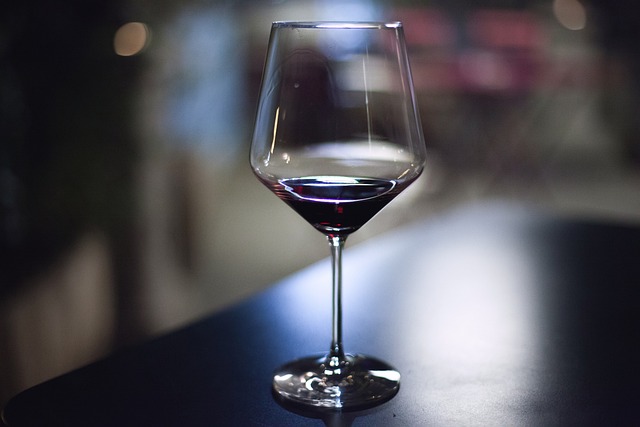
Some foods that can be astringent include red wine, dark chocolate, tea, pomegranate, grape juice, and unripe fruit. Mild astringency can be a good thing, causing a slight “slippery” feeling in the mouth, but a strong astringent taste is unpleasant and mouth-puckering.
Flavor
Astringent persimmons are a controversial fruit, in that people either love them or hate them. They must be eaten when completely soft and gelatinous. The fruit may look dark and nearly rotten, but that’s when it will be it’s tastiest. Just grab a spoon and dig in (like you’re eating pudding off of a fruit tree!)
The sugar content (also known as Brix) of a ripe astringent persimmon is extremely high, up to about 22-24 in the ‘Sharon’ persimmon. That’s almost twice as sweet as a non-astringent ‘Fuyu’ persimmon, one of the most popular types, which has a Brix of 12 or 13 – about the same as a ripe apple.
For some people, the high sugar content might be too much of a good thing. Astringent persimmons are very rich, like eating spoonsful of maple syrup, and some consider them just too sweet. Astringent varieties can also have more nuanced flavors, including chocolate, dates, or a mild spiciness or smokiness.
Astringent persimmons are excellent when dried. The gelatinous texture stays soft and the sugars concentrate even more. Whole dried persimmons are a delicacy in Asia, called hoshigaki in Japan. You can also slice and dry them in a food dehydrator. Slice them when they are soft but not too mushy; the drying process will get rid of any remaining astringency.
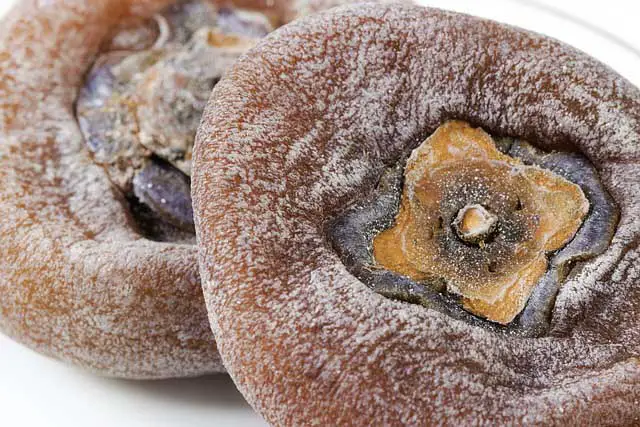
It may be possible to remove the astringency from firm persimmons with a curing method, as has been done in Asia for centuries. Methods involving exposing the under-ripe fruit to excess CO2 or ethylene gas (given off by fruits such as bananas) have been shown to make the fruit edible without softening.
Other curing methods range from piercing with an alcohol-dipped needle to smoking with burning dung. Try one of these methods and give it a taste – visit this site for more details on persimmon curing.
Growing and Harvesting
American native persimmons (Diospyros virginiana) are astringent and are cold hardy to USDA zone 4 or 5. Asian persimmons (Diospyros kaki) can be astringent or non-astringent. They are hardy to USDA zone 7 (about 10°F) and may be more cold hardy when grafted onto American persimmon rootstock.
Related: American vs. Asian Persimmons: What’s the Difference?
Astringent persimmons can be self-pollinating (such as ‘Prok’ or ‘Saijo’), but most cultivars are dioecious (either male or female) and need another tree for pollination. However, Japanese and American varieties won’t cross-pollinate with each other.
Since the 1970s, after the discovery of some simplified methods of removing tannins from firm astringent persimmons, the fruits have become more marketable. The ability to ship persimmons when firm means they can be sold in stores, although they will be less sweet than when ripened naturally on the tree.
For the best flavor, leave astringent persimmons to soften on the tree until they just about fall off. They will look darkened, slightly shriveled, and almost rotten, but that’s when they will be at peak sweetness. You can also harvest when the fruit is still a bit firm, then let it soften further on the counter.
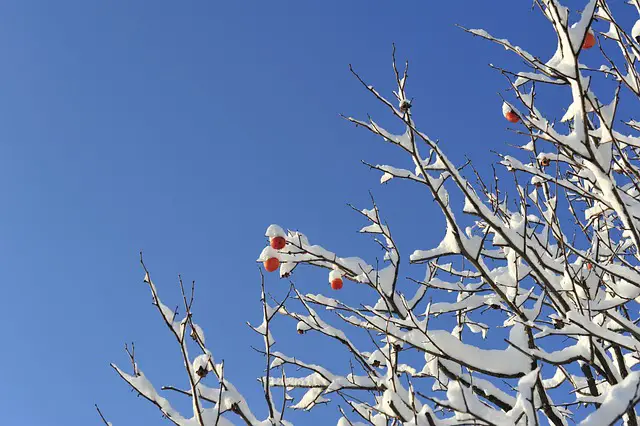
There is a myth that frost helps persimmons to ripen, but actually, frost is not necessary. Persimmons tend to ripen around the time of the first frost, which may be how this idea came about. You can use the frost date as an estimation of ripeness, but it’s better to judge picking time by other factors. Read When to Pick Persimmons (Including Harvesting Chart) to figure out when your persimmons are ready for harvest.
Favorite Varieties
- ‘Hachiya’ – The most popular type of astringent persimmon. Deep red-orange glossy peel with yellow flesh and some dark streaks. Commonly used for hoshigaki in Japan. Cold-tolerant when grafted onto American persimmon rootstock. Ripens mid/late-season.
- ‘Giombo’ – Heart-shaped fruit with a light orange, thin peel. Juicy, gelatinous flesh. Ripens midseason (Sept. to Oct.). Can be susceptible to late frosts in spring. Bears biennially when young.
- ‘Saijo’ – One of the sweetest persimmons, but can retain a little astringency even when soft and ripe. Small, conical fruit, with translucent, honey-sweet orange flesh. Heavy-yielding tree, a favorite for backyard growers. Ripens early, September to early October.
- ‘Chocolate’ – Reddish orange skin, with deep orange flesh that is darker when pollinated. Sweet, nutty, slightly spicy flavor. Ripens late October to early November.
- ‘Eureka’ – A common variety in the south, especially Texas. Large round fruit with bright red-orange skin. Vigorous growing and heavy bearing, but with a compact habit. Drought resistant and frost resistant. Ripens in late season (November).
Non-Astringent Persimmons
Flavor
Non-astringent persimmons are very sweet, but less so than ripe astringent persimmons. Many people prefer these varieties because they still have some crispness and can be eaten straight from the tree.
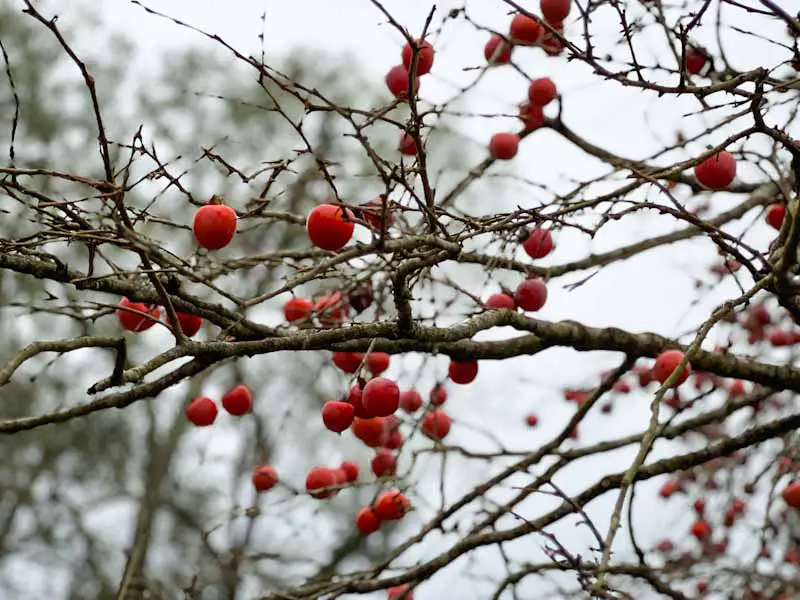
The texture of a non-astringent persimmon ranges from firm and crisp (like an apple) to slightly soft and juicy (like a peach), depending on how ripe they are. Even under-ripe, these persimmons are still sweet and lack the “puckery” bitterness of astringent varieties.
Non-astringent persimmons taste somewhat like a honeyed mango, or a sweet pear or plum, but without the acidity. There isn’t much flavor variation between non-astringent varieties, however, unlike the astringent ones that can taste quite different.
Wait to dehydrate non-astringent persimmons until they are soft and juicy. If you try to dry a crisp persimmon, the result will be too hard and tough to enjoy.
Growing
Most non-astringent persimmons are native to Asia (D. kaki), but there are a few non-astringent American types (D. virginiana) starting to be cultivated. All non-astringent varieties vary widely in size, harvest time, shape, and vigor.
As mentioned above, Asian persimmons prefer milder climates (USDA zone 7-11). Asian persimmon trees generally remain a bit smaller than the astringent American varieties. In northern climates, they can be grown in large containers and then protected or brought into a garage or shed in the winter.
Most persimmons ripen between late September and early December, depending on the climate and variety. Planting different cultivars that ripen early (‘Izu’), mid-season (‘Matsumoto Wasi’), or late (‘Fuyu’) will give you a steady harvest throughout the fall.
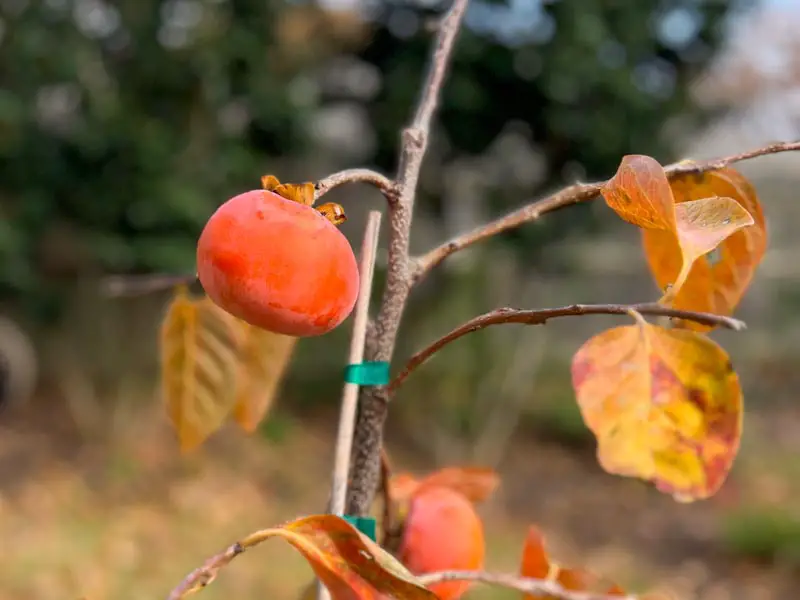
Non-astringent persimmons can essentially be harvested as soon as they turn from green to bright orange. You can pick them when still firm, or wait until there’s just a little give to the flesh when it’s squeezed.
Favorite Varieties
- ‘Fuyu’ – The most popular type of non-astringent persimmon. Round, large, slightly flattened shape. Reddish orange peel and flesh. Ripens mid-November to early December. Very sweet with no astringency even when under-ripe. Self fertile. 10-12 feet tall.
- ‘Izu’ – The earliest ripening non-astringent variety, late October to mid-November. Medium sized, light-orange fruit. Sweet honey taste. Self fertile. Compact growth habit, 8-10 feet tall.
- ‘Jiro’ – Medium to large, squarish yellow-orange fruit. Crops reliably once the tree is older, somewhat erratic when young. Very cold hardy for an Asian persimmon, to 0°F. Ripens mid-fall (Oct./Nov).
- ‘Gosho’ – Similar in flavor to Fuyu, but larger fruits on a larger tree.
- ‘Suruga’ – Red-orange medium-sized fruit. The sweetest non-astringent persimmon variety. Prone to fruit imperfections, but keeps its flavor once picked. Responds well to fruit thinning. Ripens late November to early December.
